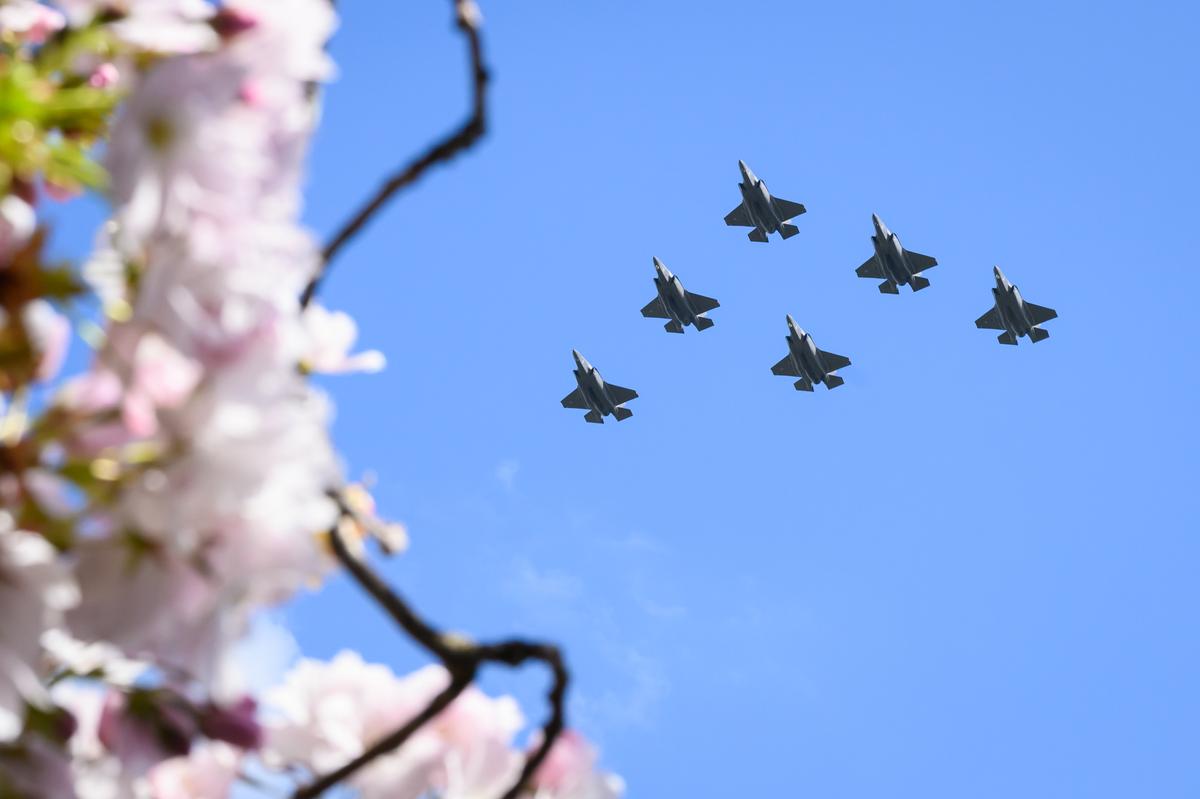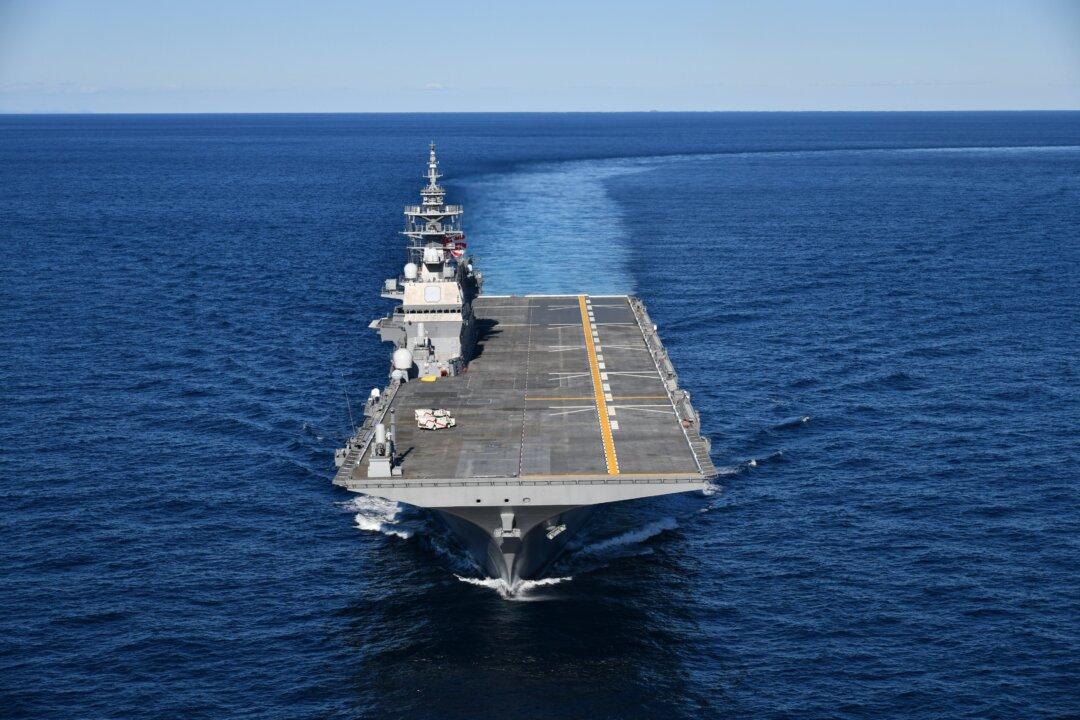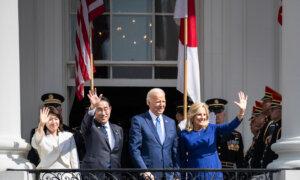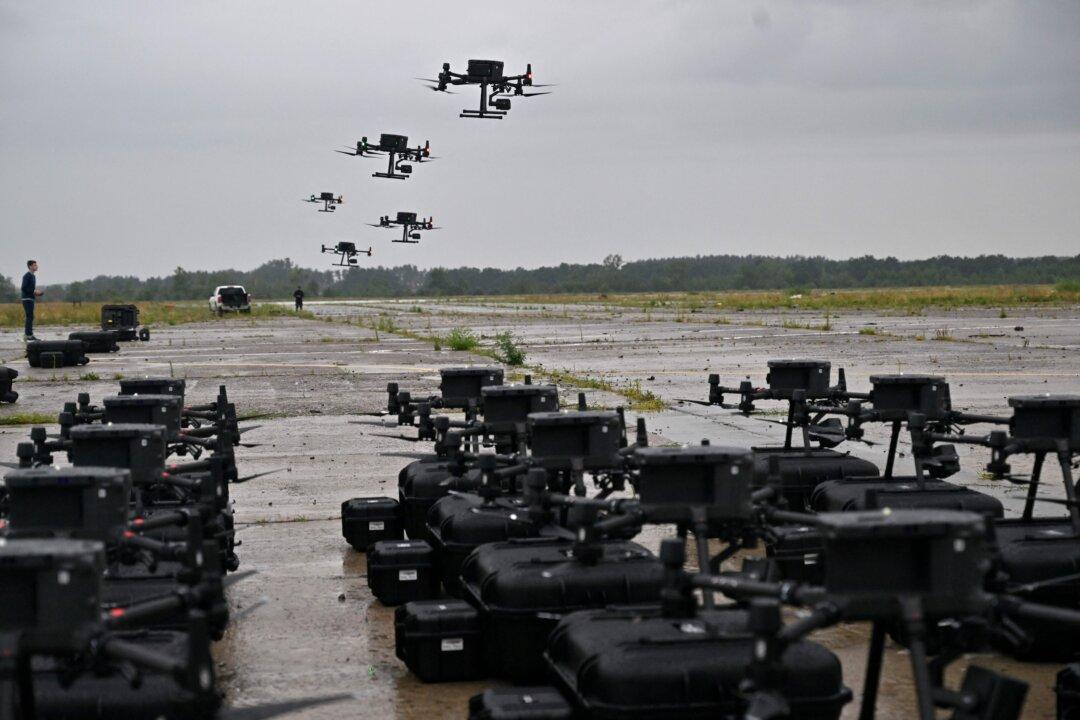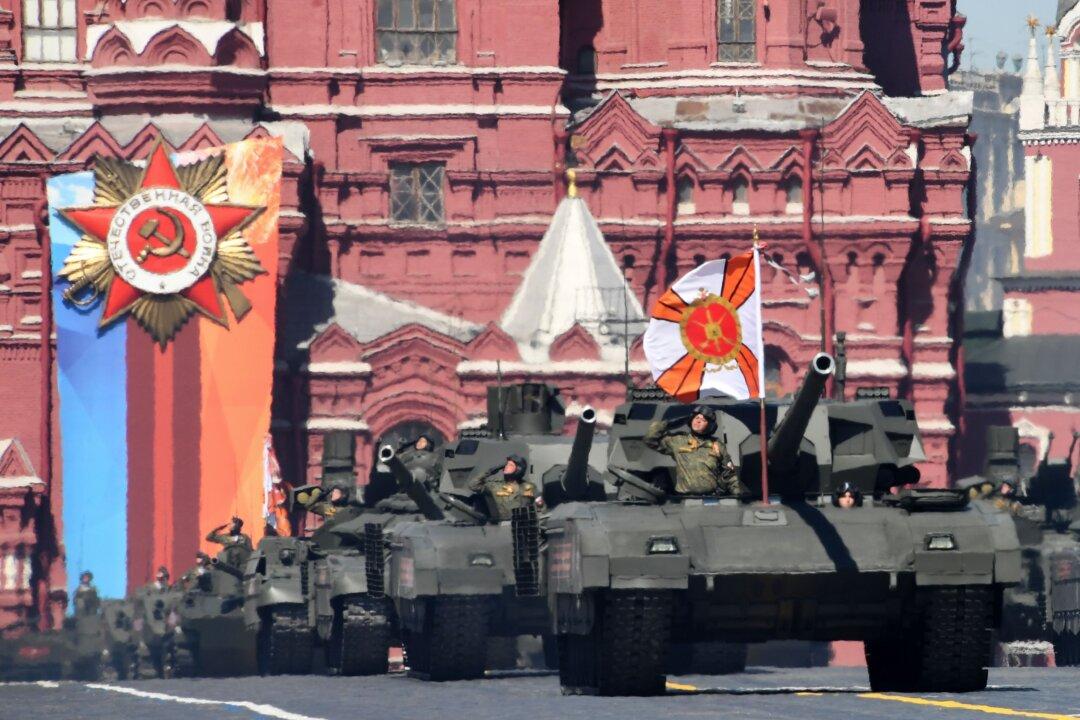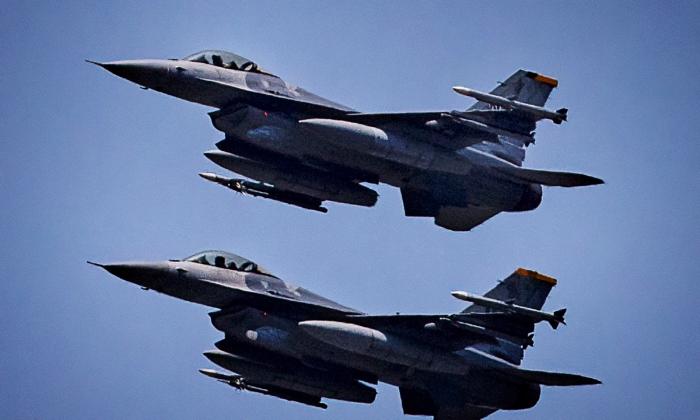Japan’s move to convert two warships into aircraft carriers underscores stronger ties in the Indo-Pacific between the United States and Japan, as the two countries solidify their position as military allies.
During Prime Minister Fumio Kishida’s state visit to Washington April 8–14, the Japanese leader and U.S. President Joe Biden unveiled initiatives aimed at deepening military, economic, and broader cooperative efforts. The collaboration is largely viewed as a strategic response to the assertive stance of the Chinese Communist Party (CCP) in the region.
The importance of the U.S.–Japan relationship has been a consistent theme across successive U.S. administrations. Under President Biden, the relationship has seen further enhancement, marking a peak in military cooperation that began with the inception of the U.S.–Japan Security Treaty during the early 1960s under President Dwight Eisenhower.
Japan Recalibrates Its Military Posture
Amid growing concerns over Chinese territorial ambitions, Japan, with U.S. support, is recalibrating its military posture from its traditionally defensive stance. A key symbol of the shift is the transformation of two Izumo-class ships, the JS Izumo (DDH 183) and JS Kaga (DDH 184), from helicopter destroyers into de facto aircraft carriers equipped with American-made F-35B stealth fighters. These advanced jets enhance Japan’s capabilities to penetrate sophisticated air defenses and support integrated combat operations.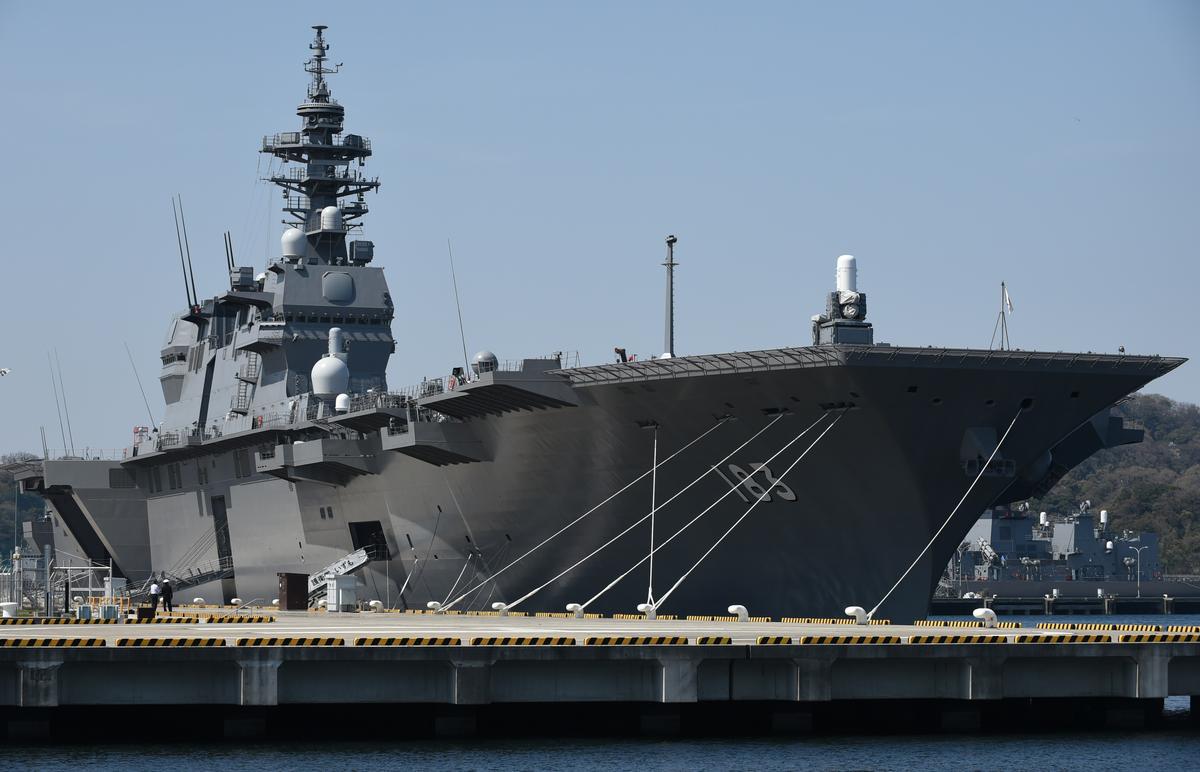
The historical context of Japan’s carrier operations adds a layer to this development. Notably, the Amagi, an Unryū-class carrier, was destroyed in a U.S. air raid in 1945, just before the atomic bombings that ended Japan’s carrier ambitions and led to its post-war pacifist constitution.
Since then, Japan has upheld a war-renouncing policy, maintaining forces solely for self-defense without amendments to its constitution. However, a critical turning point came in August 2013, when Japan announced modifications to its Izumo-class ships to bolster its defensive posture against China’s maritime assertions.
While the Izumi ships were called helicopter destroyers to avoid running afoul of Japan’s constitution, observers noted that they could accommodate larger aircraft. Japanese military officials later confirmed that the design was intended for the F-35B.
The secrecy surrounding the modifications of the Izumo-class vessels highlights the delicate balance between adhering to Japan’s pacifist constitution and responding to regional security demands.
Despite Article 9 of the Japanese Constitution, which restricts offensive weaponry, former Prime Minister Shinzo Abe’s 2014 reinterpretation facilitated a shift toward “collective self-defense.” This policy shift allows Japan to take military action in defense of its allies, broadening the scope of its military engagement.
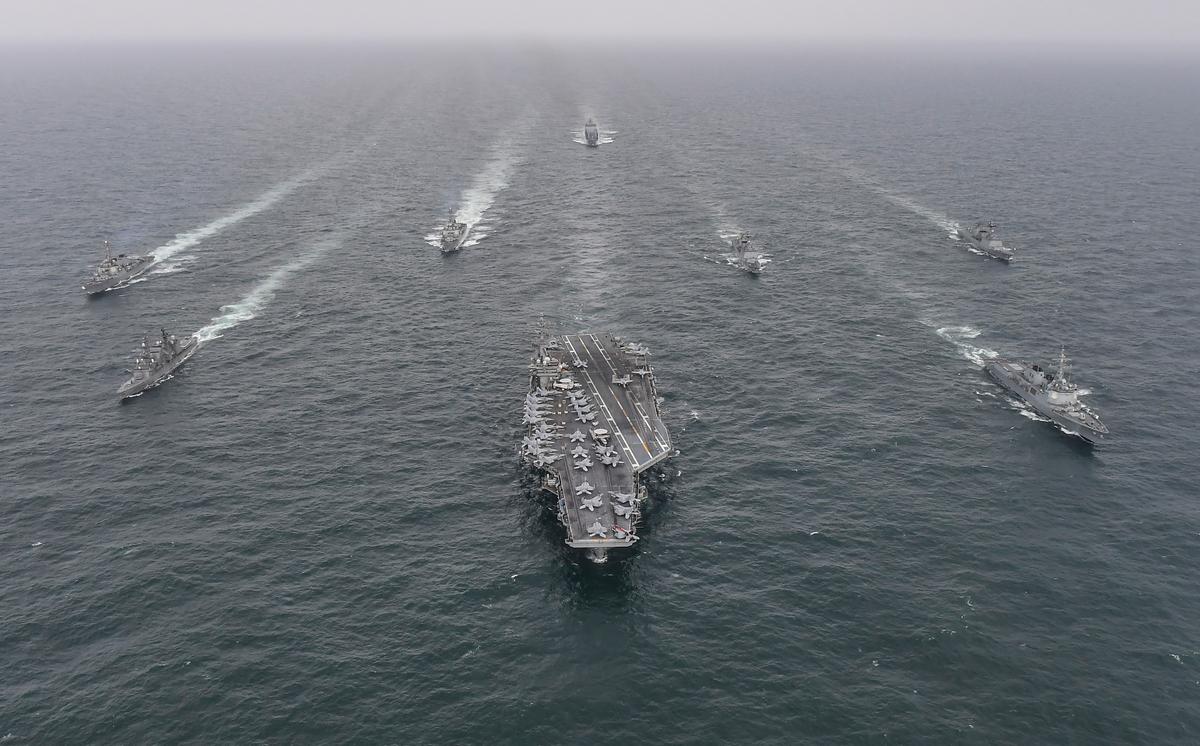
Modernizing Izumo-Class Vessels
This nuanced approach was evident when the upgraded JS Kaga was relaunched at the Kure shipyard in Hiroshima on March 29. The shipyard, historically significant as the location of the Amagi’s sinking, witnessed the transformation of the JS Kaga from an escort ship into a bona fide light aircraft carrier capable of deploying the F-35B Lightning II jets.The modernization not only enhances Japan’s defensive capabilities but also underscores its strategic shift in response to the region’s evolving security landscape.
The evolution of Japan’s maritime capabilities is accompanied by a public narrative that continues to emphasize a non-offensive stance, despite an advancement toward potential offensive capacities. The smooth progression of upgrades on the Izumo and the Kaga highlights the strategic enhancement of Japan’s naval forces. The development aligns with Japan’s obligations to ensure regional and national security, subtly shifting from a purely defensive posture to one that includes deterrent capabilities.
Recently, the Japanese Maritime Self-Defense Force announced the completion of initial modifications on the JS Kaga to accommodate the stealth fighters. Planned maritime tests are set for this year to advance the upgrades. The phased approach to modifying the Izumo-class ships ensures their alignment with Japan’s regular naval maintenance schedules and strategic defense timelines, which aim for full operational capability by fiscal year 2027.
The developments mark the first time since World War II that Japanese warships will launch fixed-wing aircraft. Although the future fleet will not mirror the size of the Imperial Japanese Navy, the incorporation of advanced fifth-generation fighters like the F-35B signifies a significant upgrade in capability.
As the JS Kaga enters its next phase of modifications in 2026, including structural and crew accommodations, similar upgrades continue on the JS Izumo, which has already hosted successful F-35B tests with the U.S. Marine Corps.
In August 2023, Japan’s commitment to enhancing its military capabilities was further highlighted when it unveiled plans to purchase 42 F-35B fighter jets. The first six of these advanced aircraft are expected to arrive by the end of 2024. They will be primarily deployed at the Japan Air Self-Defense Force’s Nyutabaru Air Base on Kyushu Island, strategically positioned to bolster the defense of Japan’s remote southern islands, including areas near the contentious Senkaku Islands.
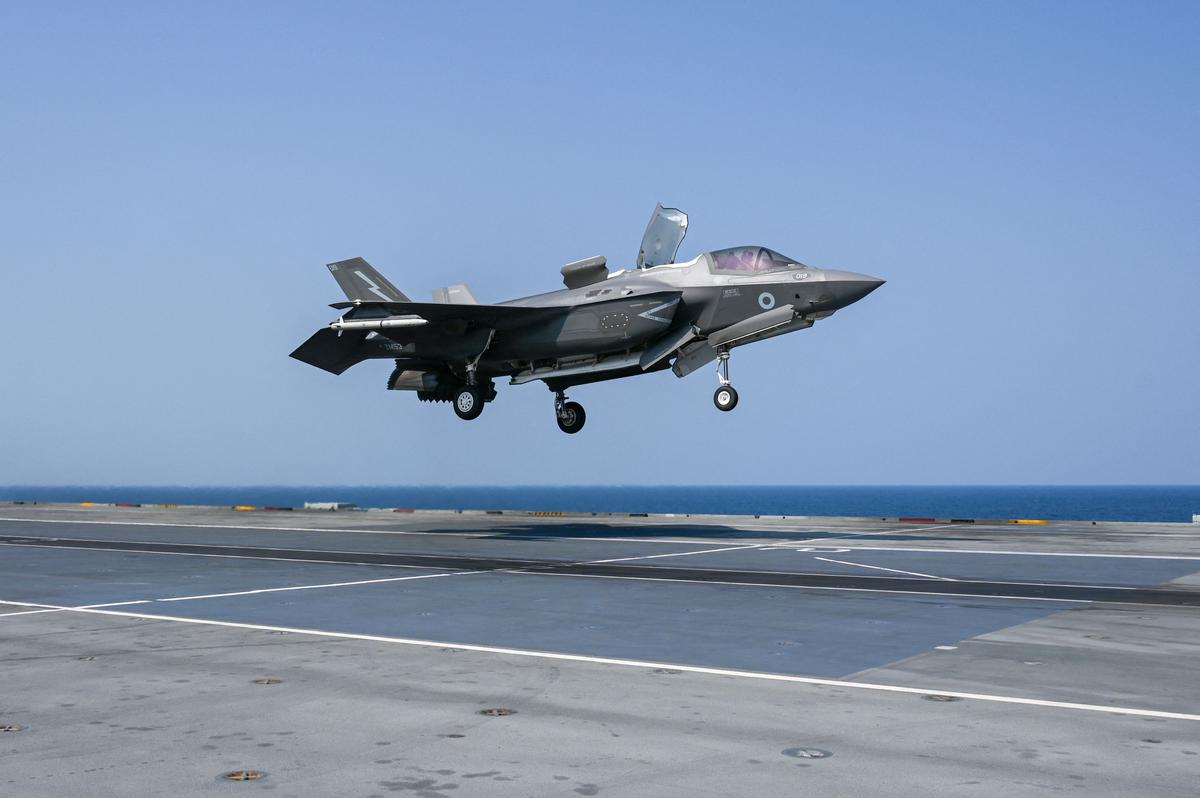
Operational Capabilities and Tactical Advantages of the F-35B
The F-35B, known for its short take-off and vertical landing capabilities, is ideally suited for operating from the decks of the modified Izumo-class ships. While each carrier has the potential to accommodate up to 21 of these aircraft, operational considerations and the ships’ retrofit limits might restrict the number to about 14 F-35Bs per carrier. This deployment capacity reflects both strategic foresight and an adaptation to the original design constraints of the Izumo and Kaga.The huge vessels, each stretching 248 meters with a displacement of 27,000 tons, represent the largest surface combatants within the Japan Maritime Self-Defense Force.
Despite their significant capabilities, the U.S. Navy continues to view the Izumo-class modifications as maintaining a defensive posture. However, the integration of F-35Bs is expected to significantly enhance Japan’s ability to engage in more complex and proactive defense strategies. This includes countering advanced adversaries equipped with long-range cruise missiles—a capability that extends far beyond the reach of traditional shipborne defenses.
The operational flexibility of the F-35B is crucial for Japan’s defense strategy. It supports a range of missions from air defense and strike coordination to electronic warfare and active defense operations. In its stealth configuration, the F-35B can engage in air missions equipped with four AIM-120 medium-range air-to-air missiles. Alternatively, in a more aggressive “Beast Mode,” it can carry an extensive arsenal of up to 14 varied missiles and precision-guided munitions, sacrificing stealth to maximize firepower.
The re-introduction of aircraft carriers equipped with advanced fighters positions Japan to significantly influence security dynamics around its maritime borders and in the broader Taiwan Strait region, analysts say.
In a potential conflict over Taiwan, Mr. Axe wrote: “The Japanese need carriers with fixed-wing fighters. The jets can swing between defensive and offensive missions—that is, protecting the naval task force one day and then, the next day, launching missiles at enemy ships.” He added, “A Japanese carrier adds depth and flexibility to a critical capability” alongside U.S. carrier strike groups in the event of a clash with Chinese forces.
